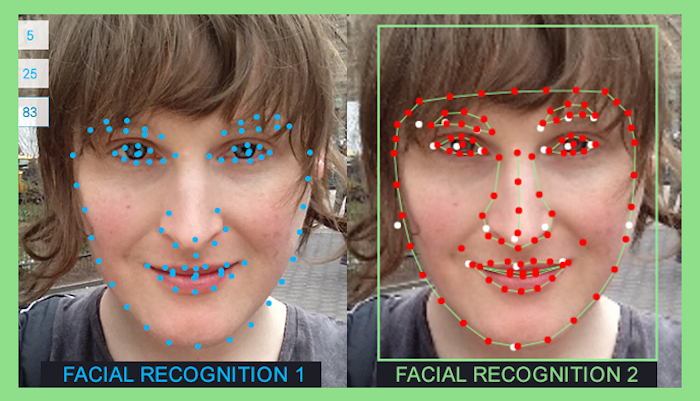Questioning the 3D Printing Revolution
Who controls the machines? How are they made? And who makes them?
When President Obama first mentioned 3D printing in his State of the Union speech in 2013, it served as a delayed but inevitable herald of the digital fabrication revolution:
“A once-shuttered warehouse is now a state-of-the art lab where new workers are mastering the 3D printing that has the potential to revolutionize the way we make almost everything. There’s no reason this can’t happen in other towns.”
Led by the influx of 3D printers and desktop CNC routers, this “revolution” promises to diminish the barrier of manufacturing, to release workers from systems that once bound them by bringing manufacturing to our home, our workplace. In scaling down the size of components manufactured, proponents now claim “anybody can make”, a belief mirrored by their cousins in Silicon Valley. Both assert that the very act of creating will liberate those who buy products to now make and sell their own, which will in turn somehow dissolve existing class and racial differences.
What gets lost in the noise of such a techno-utopian premise is whether digital fabrication really is liberating workers by giving them means of production. Or is it merely creating another class stratification on top of existing ones? Or is it enabling people to create only to participate in a consumption-driven market flooded by similar makers, where selling commodities is the only way to sustain?
Fabricating the Fabricators

Traditionally, capitalism has reinforced class division between those who manufacture and those who hold the means of production, concealing inequality under the values of a consumer-driven “free market”. The disruptive business models of Silicon Valley have in many ways only hastened some of those processes, as we see in cases like Amazon where cutthroat competition drives rapid automation and subjugates laborers into increasingly worse working conditions, all under the pretense of delivering better services.
The story isn’t that different once we move into the digital fabrication industry. While it might be tempting to link the maker culture – with its ideals of empowerment and sourcing – to the open-source movement, both of them share more parallels with Silicon Valley’s failed techno-utopianism than it might appear.
While touring the factory of a prominent maker of additive 3D printers, I couldn’t help but notice the floor layout cleanly segmented into two sections, divided by a wall with glass windows. On one side was the design team, with clean floors, cubicles and a clean, sanitized aesthetic. On the other side of glass wall was the assembly and manufacturing team, working on components of the different printer models. The stark contrast was only compounded by the demographic split: the design & research section was dominated by overwhelmingly young, white males that wouldn’t feel out of place in any tech startup. On the other side of the wall, the laborers working on the assembly line and workbenches were almost exclusively women, people of color.
The separation of these two distinctly skilled workforces within the same floor tells a story that contradicts the liberation promises of the fabrication revolution. The workers in that factory are certainly not among those “liberated” by 3D printing. They are essentially part of a hierarchy, subjugated to carry out the designs and whims of the upper management class. They are separated from the processes and allocation of resources. Managers of these additive manufacturing facilities often pride themselves on the implementation of workplace practices where all workers can suggest design improvements, but these attempts at a “flat hierarchy” come across as hollow: the workers still do not dictate the decisions made regarding their wage, work burden or production output.
The Liberated

Photo CC-BY Ariosvaldo Gonzáfoles.
Who, then, are those “liberated” by the fabrication revolution?
Is it the clients of industrial-scale additive manufacturing machines? Is it companies like Boeing who are now able to create individual components quickly before assembling them? Or is the purpose of digital fabrication in these industries little beyond boosting corporate efficiency and productivity?
Is it the consumers of the machines, the makers – those who 3D print their own custom-designed products and sell them on Etsy? Are creative artists and designers among those actually “empowered” by the revolution?
It is worth analyzing such a claim before wholly embracing it.
It is true that 3D printers have allowed artists and designers to create decorative products like jewelry and sculpture and potentially sell them for money. As the market for such machines gets competitive, their affordability rises, increasing their utilization. However, these artists and designers are still partaking in a system of products and commodities where, like the workers in the 3D printer factories, they aren’t in control of the means through which all of it gets produced. They may be able to print and sell more custom-designed items, but that system is still predicated on a capitalistic market driven by supply-and-demand. If the end-point of the fabrication revolution is to have a 3D printer in every home, then what are we exactly supplying?
While the DIY ideals of RepRap Project — an initiative to build a 3D printer that can be constructed from the components it prints — are admirable, they still hold a considerably high technical barrier. This means that most are destined to remain dependent upon the popular manufacturer of 3D printers like MakerBot and Ultimaker. That still doesn’t solve the stark disparity we see in the tech field even today. Many of the 3D printer companies have outreach programs aimed at bringing 3D printers to schools, similar to efforts in the tech sector like Google Tools for Schools. But as we see in the case of massive gender and racial disparity in the industry, ubiquity doesn’t equate accessibility. Without the actual intention or attempts to change the work and hiring culture of the tech industry, these outreach programs come across as another form of marketing. Particularly in the case of 3D printers, the initial cost investment is so high that mostly private schools or public schools funded by rich donors can afford it. Rather than turning the profits of their sales to increase the wages of workers who manufacture the machines, these companies continue in the tradition of neoliberal capitalistic ventures, funding their marketing campaigns under the guise of faux-progressive outreach programs. Additionally, in a global consumer market driven by the pursuit of profits, initiatives like Afrimakers, intended as technology outreach, instead carry an imperialist, colonialist taint no matter how “well-intentioned” they are.
When it comes to makers, there are already increasing concerns among certain sections of the consumer industry that replications of products like sunglasses and jewelry might decimate brand value. It also raises concerns about people’s work being stolen or appropriated without their consent. We must further question assumptions that people who don’t currently have access to 3D printing aren’t already creating things: marginalized people have always created goods, products, arts, platforms and businesses, it’s just that those creations aren’t recognized or valued by dominant oppressive systems. If the libertarian, techno-utopian ideas of the revolution are placed within the social context of our present-day society, then labor and narratives of the marginalized folks will continue to be stolen and erased, as we have seen so many times before. A ubiquitous 3D printer may equip the populace with a potential to sustain themselves without relying on the market, but it does not necessarily erase the inherent disparities in our society. In fact, it might only end up amplifying them.

A Post-Work Society
There’s a belief among proponents of artificial intelligence that automation will eventually liberate people from their wage labor, as stated by James Hughes in his book Citizen Cyborg. While historically, automation has always been met with fears of job losses, its consequences have been far more complex for the labor market. Whether we look at Industrial Revolution or the rise of computers in a workplace, human labor’s appeal has changed, but hasn’t been eliminated entirely.
If we try to look at the fabrication revolution and the tools they’ve brought in the form of desktop CNC routers and 3D printers, we can possibly see them as one component of a larger picture – one that seeks to automate work and eliminate human need to work. It is a noble ideal, if and only if the existing conditions that bind most humans to wage labor are erased. We will not achieve elimination of work and disparities by just allowing everyone to make things, if that is still dependent on buying an Ultimaker or Makerbot printer and the capitalist market of commodities and goods.

Such an idealistic fantasy is predicated on the idea that a post-work society will be rid of existing socio-economic disparities when automation arrives. That is a false distinction – automation is not the silver bullet to every class, race and gender disparity. The maker culture and its parallel fabrication revolution fail to realize the distinction, and thus adopt a techno-utopian mentality. What we end up getting is another form of disruptive market a-la Uber, that shuffles relations between who produces, creates and consumes without fundamentally altering the directionality of those relations. Additive manufacturers using 3D printers might be creators, but they are still consumers of those who make the machines. They are still bound to the larger system of a capitalist, commodity-driven market where their sustenance is in the hands of others. And issues around who controls the machines, the way in which they are made, and who makes them, raises many doubts about the optimistic ideals of this so-called revolution.
Conclusions
Believing that technology is the solution to deeply-rooted socio-economic issues is problematic on numerous levels. Enabling people to create is merely a small part in a larger solution that’s needed to liberate the worker class from the entrenched system of production. It brings into question whether there is any distinction between the disruptive policy of maker/fabrication culture and Silicon Valley ideology itself, where they supposedly challenge existing hierarchies without altering the relations between the worker and the means of production. The fabrication revolution might equip people with the tools that have the radical potential to allow self-sustenance, but that condition won’t rise when everyone has a 3D printer, as manufacturers would have you believe. Instead, it will rely on envisioning a post-work society where the commodity-driven market has been upended, and people 3D print to create for the sake of creating instead of relying on that market to sustain. It will be take more than a set of technologies to help bring that vision to fruition, it will take a concentrated political and social effort to counter socioeconomic disparity of all forms. The technology can only help if it doesn’t end up repeating established patterns that exacerbate those differences in the first place. That would be a radical endpoint that would truly liberate those that fabrication revolution claims to stand for.


